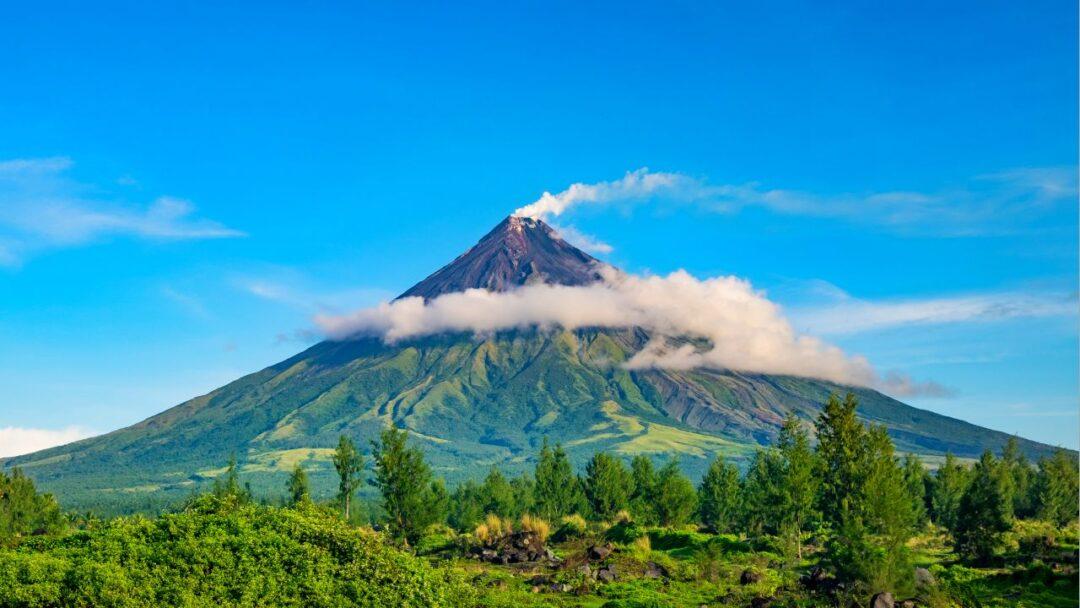Table of Contents

Introduction
Exploring Volcanoes: Forces of Nature and Geological Wonders. Volcanoes serve as breath-taking examples of the extraordinary beauty and power of nature. For centuries, these geological wonders have captured people’s attention, inspiring both fear and wonder. In this article, we take a journey inside volcanoes to explore their various types, solve the mysteries surrounding their formation, and learn about the significant effects they have on our planet.
Formation of Volcanoes
Volcanoes are created in the fiery interior of the Earth, where magma, or molten rock, rises to the surface. The movements of the Earth’s tectonic plates, which are substantial chunks of the crust, are closely related to this process. Magma can ascend along these pathways when these plates collide or separate, eventually erupting onto the Earth’s surface.
Types of Volcanoes
There are many different types of volcanoes, and each one exhibits distinct qualities and eruptive behavior. Shield volcanoes, like those in the Hawaiian Islands, are large and gently sloping, and their lava flows can reach great lengths. Stratovolcanoes are steep, towering structures made of alternating layers of ash, lava, and other volcanic materials, like Mount Fuji in Japan. Calderas are enormous volcanic depressions created as a result of large eruptions that leave behind a sizable crater, such as Yellowstone National Park.
Volcanic Activity and Eruptions
Volcanic eruptions are magnificent demonstrations of nature’s power. As a result of the explosive release of gases, ash, and lava, they take place when the pressure from rising magma becomes too great to contain. These eruptions can be mild effusive eruptions, in which lava flows gradually, or explosive eruptions, in which enormous amounts of ash and volcanic debris are ejected into the atmosphere. Local environments, climatic patterns, and even the weather on a global scale can all be significantly impacted by volcanic eruptions.
Volcanic Features and Landscapes
The intricate interaction between volcanic activity and the Earth’s surface can be seen in the volcanic landscapes. The surrounding terrain is shaped by striking features that are created during eruptions, such as volcanic cones, lava flows, and craters. Volcanic regions frequently have intriguing geological features like geysers, hot springs, and fumaroles, which further enhance the allure of these already captivating landscapes.
Volcanic Hazards and Impacts
Volcanoes are awe-inspiring, but they also pose serious risks to the environment and to human populations. A variety of dangers, such as pyroclastic flows, volcanic ash, lahars (mudflows), and toxic gases, can be unleashed by volcanic eruptions. Volcanic eruptions can have disastrous effects, resulting in property damage, fatalities, and long-lasting environmental consequences. However, we work to reduce these risks and safeguard vulnerable communities through scientific advancements and monitoring.
What are volcanoes?
Volcanoes are naturally occurring structures in the crust of the Earth where molten rock, ash, and gas eruptions occur. Magma, or molten rock, rises from the Earth’s interior through these openings in the surface.
How are volcanoes formed?
Tectonic plates, which are sizable chunks of the Earth’s crust, move as volcanoes form. Weak spots in the crust are produced when two plates collide or separate, allowing magma to rise and form volcanoes.
What causes a volcano to erupt?
When a volcano experiences internal pressure buildup, the magma rises to the surface, resulting in volcanic eruptions. An explosive eruption is caused by the release of accumulated gases and the force of the rising magma.
Are all volcanoes dangerous?
Volcanoes can be risky when they erupt, but not all volcanic activity is dangerous. Some volcanoes have not erupted in a long time or are unlikely to erupt again, so they are classified as dormant or extinct. However, approaching an active volcano should be done so carefully as they can be dangerous.
Can volcanic eruptions be predicted?
Volcanic eruptions are difficult to predict with complete certainty. To assess volcanic behavior, however, and to issue warnings when necessary, scientists employ a variety of monitoring techniques, such as seismic activity and gas emissions.
What are the different types of volcanoes?
Shield volcanoes, stratovolcanoes (composite volcanoes), cinder cones, and calderas are a few of the different types of volcanoes. Based on its shape and eruptive behavior, each type has distinctive characteristics.
Where are some famous volcanic sites around the world?
Kilauea in Hawaii, Mount Fuji in Japan, Mount Vesuvius in Italy, and Krakatoa in Indonesia are a few well-known volcanic locations. Due to their geological significance and natural beauty, these places draw tourists.
Can you hike or explore volcanoes?
Yes, a lot of volcanoes provide hiking and exploration opportunities. However, it is crucial to adhere to safety precautions and be informed of any local restrictions or ongoing volcanic activity. Before visiting an area where there are active volcanoes, always check with the local authorities or knowledgeable guides.
Are there any benefits to volcanic activity?
The formation of fertile soil and the shaping of the Earth’s surface are both greatly influenced by volcanic activity. The soil is enriched with nutrients from volcanic ash and lava, making it exceptionally fertile for farming. An additional renewable energy source is geothermal energy that is captured from volcanic regions.
What precautions should I take when visiting volcanic areas?
It’s crucial to heed regional advice and warnings when traveling through volcanic regions. Follow designated trails or paths, keep up with the latest volcanic activity, and be ready for sudden changes in the weather. Additionally, it is a good idea to transport necessary safety gear like protective clothing and communication tools.
Conclusion
Volcanoes provide a glimpse into the dynamic nature of Earth’s geology and serve as an example of the complex forces that shape our planet. We learn more about how they form, what kinds of things they are, and how they affect our world, which helps us appreciate how delicately natural processes must coexist. Let’s respect the potential dangers that volcanoes pose while admiring their breathtaking beauty and power. Because hidden within these geological marvels is an enthralling narrative that continues to influence our planet today.
2 Most Powerful and Fastest Creature in The Animal Kingdom: NEXT POST